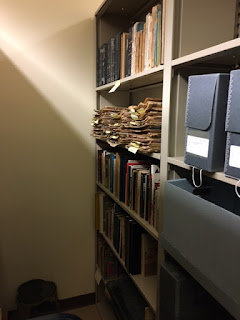Twitter Reflection
When Professor Martin said that we needed
to open a twitter account I was unsure what to expect. My knowledge of twitter
was slim because I never needed to open a twitter account; therefore I never
used one. At first tweeting was a slow process and getting in the habit of
tweeting was an adjustment. I was basically a late bloomer, but I eventually
caught on how to use the social media. Learning to use Twitter was one part of
accomplishing the assignment. The other part that mattered the most was my
involvement on Twitter and collaborating with others in the class while
following other outside academic followers. Even though I enjoyed that the
professor included this assignment, I was skeptical about using Twitter at
first. I did not want to be hooked into social media in an unhealthy way, but I
am glad I went through with it. I found the purpose of this assignment was to
use it as a teaching tool in how to use Twitter for academic purposes. In
addition, the assignment helped me to apply the strategies in class as a way to
create healthy and constructive architectures of participation. The real question
was how did I want to participate in architectures of participation?
Daunting, as it may have seemed for me, I
chose to use my time in posting relevant digital humanities articles, news, and
images. I felt that I could contribute my class in giving information. I am a
giver. As a historian and researcher, I have learned to find useful resources.
The challenge I faced was the word limit because I am a wordy person. It was
not until I read the book, Content
Strategy for the web, I understood that to get the message across I must do
less, not more. Even though I wanted to say so much, I needed to be concise and
effective with a few words that could draw my classmates and other audiences to
look at what I post. As a result, I got new followers from people I knew such
as Digital Humanities Tp. I even had people like and respond my tweets outside
from class such as Assistant Professor Eric Weikott and Digital Humanities UCLA
Program Coordinator Miriam Posner. All this contribution could lead to
participatory culture because of the increase in collaboration from the
architectures of participation. Twitter is a good example of one of Rheingold’s
five literacies, collaboration. Collaboration works in our day-to-day lives,
but also, in academia. Twitter was an effective tool in sending others and my
message and ideas across. The assignment helped me stay attentive with people
in social media, and expand in knowledge and scholarship. Twitter helped me be
an academic participant on the web. Twitter was another medium to help me find
resources on digital humanities and even for me, news about history.



Comments
Post a Comment